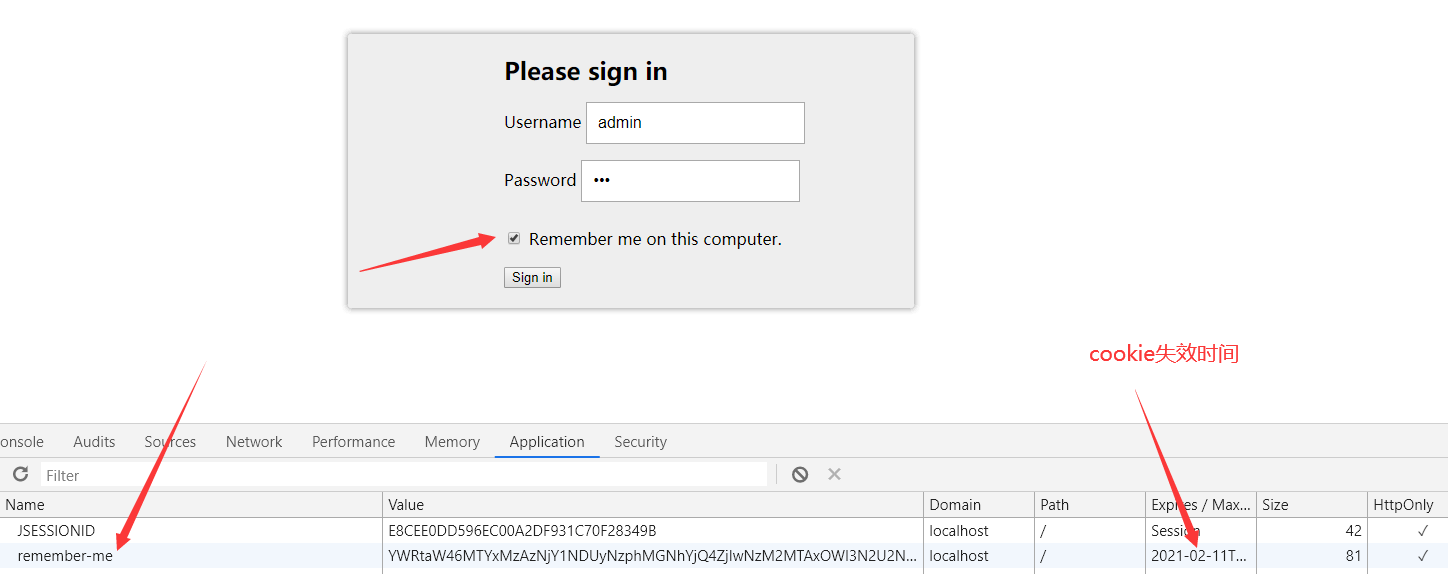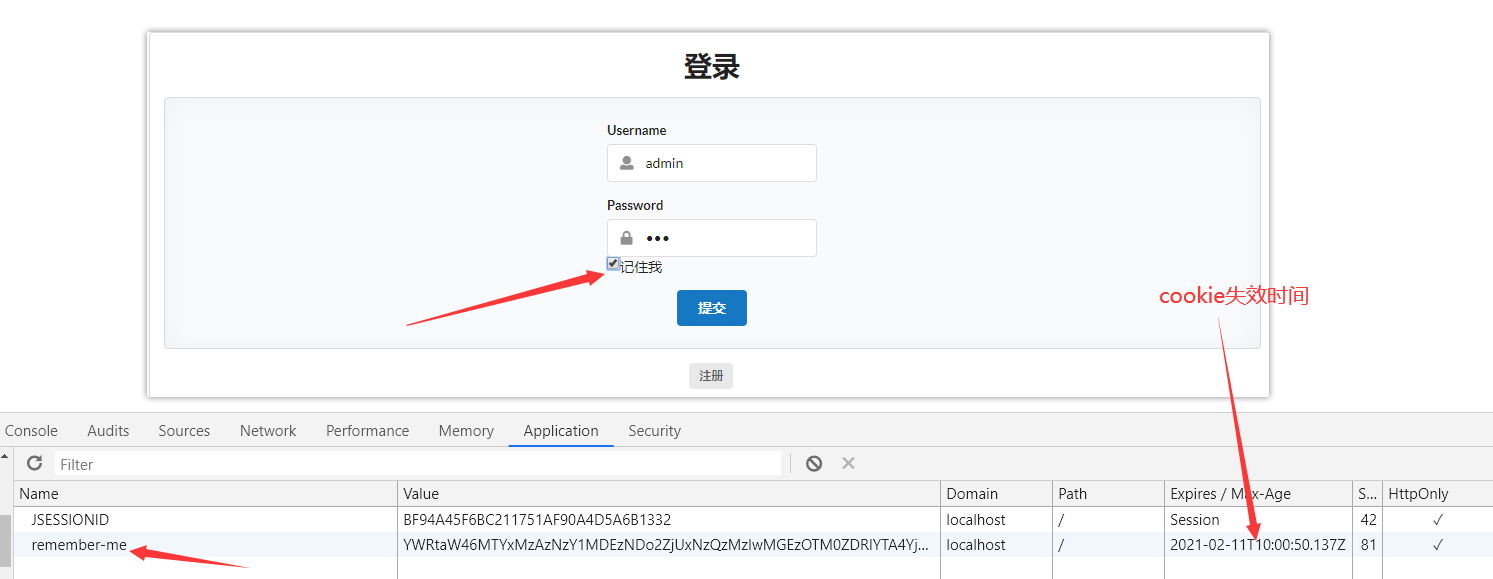前言:
在 Web 开发中,安全一直是非常重要的一个方面。安全虽然属于应用的非功能性需求,但是应该在应用开发的初期就考虑进来。如果在应用开发的后期才考虑安全的问题,就可能陷入一个两难的境地:一方面,应用存在严重的安全漏洞,无法满足用户的要求,并可能造成用户的隐私数据被攻击者窃取;另一方面,应用的基本架构已经确定,要修复安全漏洞,可能需要对系统的架构做出比较重大的调整,因而需要更多的开发时间,影响应用的发布进程。因此,从应用开发的第一天就应该把安全相关的因素考虑进来,并在整个应用的开发过程中。
Java Web项目的权限管理框架,目前有两个比较成熟且使用较多的框架,Shiro 和 Spring Security ,Shiro 比 Spring Security更加轻量级,但是需要手动配置的东西较多,Spring Security 和 Spring 集成更好,甚至直接适配了Spring Boot。
学习springsecurity用到的pom.xml依赖:

<dependencies> <dependency> <groupId>org.springframework.boot</groupId> <artifactId>spring-boot-starter-thymeleaf</artifactId> </dependency> <dependency> <groupId>org.springframework.boot</groupId> <artifactId>spring-boot-starter-web</artifactId> </dependency> <dependency> <groupId>org.springframework.boot</groupId> <artifactId>spring-boot-starter</artifactId> </dependency> <dependency> <groupId>org.springframework.boot</groupId> <artifactId>spring-boot-starter-test</artifactId> <scope>test</scope> </dependency> <!--spring-security依赖--> <dependency> <groupId>org.springframework.boot</groupId> <artifactId>spring-boot-starter-security</artifactId> </dependency> <!--security跟Thymeleaf整合--> <dependency> <groupId>org.thymeleaf.extras</groupId> <artifactId>thymeleaf-extras-springsecurity5</artifactId> <version>3.0.4.RELEASE</version> </dependency> </dependencies>
一、springsecurity入门学习
1、准备测试数据
这里我准备的是一个首页一个登录页面,以及三个vip等级对应的3个页面、
静态资源放到static目录下、views放到templates下
下载链接:https://files.cnblogs.com/files/zhangzhixi/SpringBoot-SpringSecurity%E7%B4%A0%E6%9D%90.rar
2、认识SpringSecurity
Spring Security 是针对Spring项目的安全框架,也是Spring Boot底层安全模块默认的技术选型,他可以实现强大的Web安全控制,对于安全控制,我们仅需要引入 spring-boot-starter-security 模块,进行少量的配置,即可实现强大的安全管理!
记住几个类:
- WebSecurityConfigurerAdapter:自定义Security策略
- AuthenticationManagerBuilder:自定义认证策略
- @EnableWebSecurity:开启WebSecurity模式
1、引入 Spring Security 模块
<dependency> <groupId>org.springframework.boot</groupId> <artifactId>spring-boot-starter-security</artifactId> </dependency>
加入依赖后,会自动获取Spring Security 5.1.5版本的Jar包:
然后,,一个基本的Spring Security已经有了,然后打开浏览器,访问http://localhost:8080,神奇的出来了一个登录页面,但是并没有创建任何的html文件、

2、登录名以及密码
登录security提供的默认login页面:
username:user
password:是在控制台打印的一串UUID

然后就可以登录到我们的首页了。
3、基础配置类
编写了配置类,security的默认配置就不会生效了(不会直接跳转到login页面,而是直接访问主页)、依照我们自己的配置来:
- 定义请求的授权规则:
@EnableWebSecurity // 开启WebSecurity模式
public class SecurityConfig extends WebSecurityConfigurerAdapter {
@Override
protected void configure(HttpSecurity http) throws Exception {
// 定制请求的授权规则
// 首页所有人可以访问
http.authorizeRequests().antMatchers("/").permitAll()
.antMatchers("/level1/**").hasRole("vip1")
.antMatchers("/level2/**").hasRole("vip2")
.antMatchers("/level3/**").hasRole("vip3");
}
}
测试一下:发现除了首页,都进不去了!因为我们目前没有登录的角色,因为请求需要登录的角色拥有对应的权限才可以!
- 在configure()方法中加入以下配置,开启自动配置的登录功能!
// 没有权限默认会到登录页面,需要开启登录功能! http.formLogin();
此时如果没有权限就会跳转至登陆页
- 定义认定规则,重写configure(AuthenticationManagerBuilder auth)方法
//认证
@Override
protected void configure(AuthenticationManagerBuilder auth) throws Exception {
//数据正常应该从数据库中取,现在从内存中取
auth.inMemoryAuthentication().passwordEncoder(new BCryptPasswordEncoder())
// 设置用户名密码以及能够访问的权限设置
.withUser("admin").password(new BCryptPasswordEncoder().encode("123")).roles("vip1", "vip2")
.and()
.withUser("root").password(new BCryptPasswordEncoder().encode("123")).roles("vip1", "vip2", "vip3")
.and()
.withUser("guest").password(new BCryptPasswordEncoder().encode("123")).roles("vip1");
}
就是说我们能够访问首页,如果想进入到别的页面就需要登录:
什么用户对应什么权限,比如我使用了admin用户登录成功后,可以访问vip1和vip2的页面,但是访问不了vip3的页面!
这里设置密码加密auth.inMemoryAuthentication().passwordEncoder(new BCryptPasswordEncoder())
否则会报There is no PasswordEncoder mapped for the id"null"错误,
创建的每个用户也必须添加密码加密**.password(new BCryptPasswordEncoder().encode("123"))**
4、注销以及权限控制
注销:
1、开启自动配置的注销功能:
//定制请求的授权规则
@Override
protected void configure(HttpSecurity http) throws Exception {
//....
//开启自动配置的注销的功能
// /logout 注销请求
http.logout();
}
2、前端页面添加注销按钮
<a class="btn btn-primary" th:href="@{/logout}">注销</a>
3、测试发现,点击注销按钮后会跳转到登陆页面,此时想要在注销成功后跳转到指定页面需要在请求后添加.logoutSuccessUrl("/");
// .logoutSuccessUrl("/"); 注销成功来到首页
http.logout().logoutSuccessUrl("/");
权限控制:
需求:
用户没有登录的时候,导航栏上只显示登录按钮
用户登录之后,导航栏可以显示登录的用户信息及注销按钮!
还有就是,比如admin这个用户,它只有 vip2,vip3功能,那么登录则只显示这两个功能,而vip1的功能菜单不显示!
1、导入依赖
!--security跟Thymeleaf整合--> dependency> <groupId>org.thymeleaf.extras</groupId> <artifactId>thymeleaf-extras-springsecurity5</artifactId> <version>3.0.4.RELEASE</version> /dependency>
2、index页面导入命名空间
xmlns:th="http://www.thymeleaf.org" xmlns:sec="http://www.thymeleaf.org/extras/spring-security"
3、修改index页面,增加判断(是否已登录)
<div class="ui segment" id="index-header-nav" th:fragment="nav-menu"> <div class="ui secondary menu"> <a class="item" th:href="@{/index}">首页</a> <!--未登录,显示登录按钮--> <div class="right menu" sec:authorize="!isAuthenticated()"> <a class="item" th:href="@{/login}"> <i class="address card icon"></i> 登录 </a> </div> <!--已登录,显示登录用户以及注销按钮--> <div class="right menu" sec:authorize="isAuthenticated()"> 用户名:<p sec:authentication="name"></p> 角色:<p sec:authentication="principal.authorities"></p> <a class="item" th:href="@{/logout}"> <i class="address card icon"></i> 注销 </a> </div> </div> </div>


4、修改index页面,增加判断(显示哪个用户对应的页面)
<!--如果登录用户拥有这个角色,则显示该div内的内容,如果没有则不显示--> <div class="column" sec:authorize="hasAnyRole('vip1')"> <div class="ui raised segment"> <div class="ui"> <div class="content"> <h5 class="content">Level 1</h5> <hr> <div><a th:href="@{/level1/1}"><i class="bullhorn icon"></i> Level-1-1</a></div> <div><a th:href="@{/level1/2}"><i class="bullhorn icon"></i> Level-1-2</a></div> <div><a th:href="@{/level1/3}"><i class="bullhorn icon"></i> Level-1-3</a></div> </div> </div> </div> </div>
比如admin用户只有vip1跟vip2的权限,那么页面上只显示vip1跟vip2的页面信息

5、记住我以及首页定制
记住我功能:
//定制请求的授权规则
@Override
protected void configure(HttpSecurity http) throws Exception {
//。。。。。。。。。。。
//记住我,保存2周
http.rememberMe();
}
测试,关闭浏览器再次打开用户依旧存在
本质上是保存到cookie,通过浏览器审查元素的application中可以看到

定制登录页:
index.html、controller、还有login.html的请求都要改成/toLogin,否则无法跳转到自定义的login页面
// 没有权限默认会到登录页面,开启登录功能!
http.formLogin().loginPage("/toLogin"); // 定制登录页面
但是我们的自定义的登录页面没有记住我功能,所以要在登录页面添加记住我功能选框,并在configure将标签的name属性接收
login的form表单:
1 <form th:action="@{/toLogin}" method="post"> 2 <div class="field"> 3 <label>Username</label> 4 <div class="ui left icon input"> 5 <input type="text" placeholder="Username" name="username"> 6 <i class="user icon"></i> 7 </div> 8 </div> 9 <div class="field"> 10 <label>Password</label> 11 <div class="ui left icon input"> 12 <input type="password" name="password"> 13 <i class="lock icon"></i> 14 </div> 15 <input type="checkbox" name="remember">记住我 16 </div> 17 <input type="submit" class="ui blue submit button"/> 18 </form>
configure接收表单传来的值
// 记住我功能,cookie保存时间2周
http.rememberMe().rememberMeParameter("remember");

